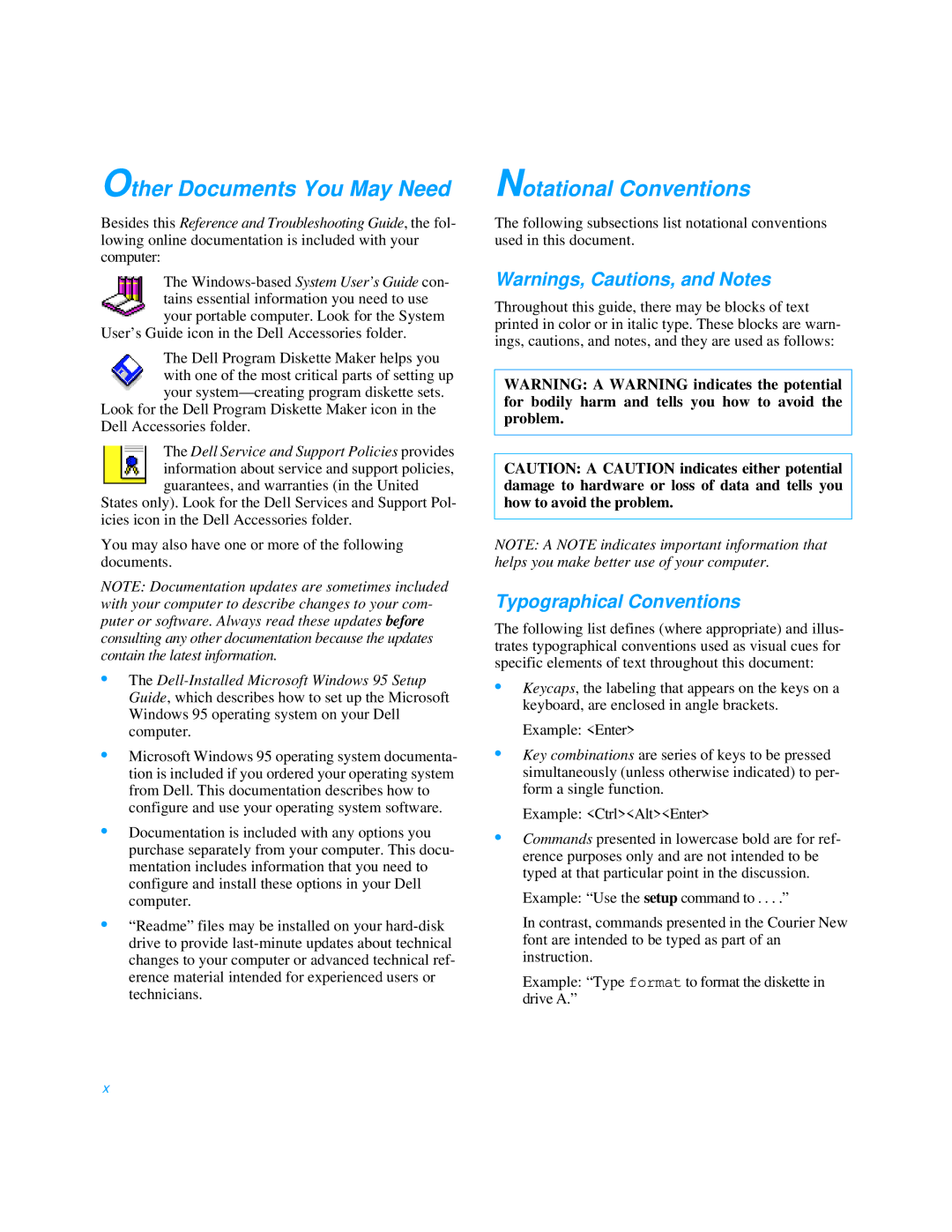
Other Documents You May Need
Besides this Reference and Troubleshooting Guide, the fol- lowing online documentation is included with your computer:
The
User’s Guide icon in the Dell Accessories folder.
The Dell Program Diskette Maker helps you with one of the most critical parts of setting up your
Look for the Dell Program Diskette Maker icon in the Dell Accessories folder.
The Dell Service and Support Policies provides information about service and support policies, guarantees, and warranties (in the United
States only). Look for the Dell Services and Support Pol- icies icon in the Dell Accessories folder.
You may also have one or more of the following documents.
NOTE: Documentation updates are sometimes included with your computer to describe changes to your com- puter or software. Always read these updates before consulting any other documentation because the updates contain the latest information.
•The
•Microsoft Windows 95 operating system documenta- tion is included if you ordered your operating system from Dell. This documentation describes how to configure and use your operating system software.
•Documentation is included with any options you purchase separately from your computer. This docu- mentation includes information that you need to configure and install these options in your Dell computer.
•“Readme” files may be installed on your
Notational Conventions
The following subsections list notational conventions used in this document.
Warnings, Cautions, and Notes
Throughout this guide, there may be blocks of text printed in color or in italic type. These blocks are warn- ings, cautions, and notes, and they are used as follows:
WARNING: A WARNING indicates the potential for bodily harm and tells you how to avoid the problem.
CAUTION: A CAUTION indicates either potential damage to hardware or loss of data and tells you how to avoid the problem.
NOTE: A NOTE indicates important information that helps you make better use of your computer.
Typographical Conventions
The following list defines (where appropriate) and illus- trates typographical conventions used as visual cues for specific elements of text throughout this document:
•Keycaps, the labeling that appears on the keys on a keyboard, are enclosed in angle brackets.
Example: <Enter>
•Key combinations are series of keys to be pressed simultaneously (unless otherwise indicated) to per- form a single function.
Example: <Ctrl><Alt><Enter>
•Commands presented in lowercase bold are for ref- erence purposes only and are not intended to be typed at that particular point in the discussion.
Example: “Use the setup command to . . . .”
In contrast, commands presented in the Courier New font are intended to be typed as part of an instruction.
Example: “Type format to format the diskette in drive A.”
x
